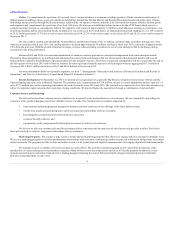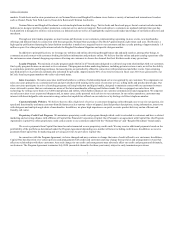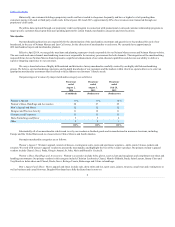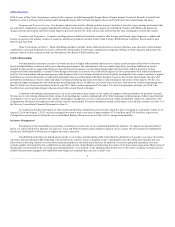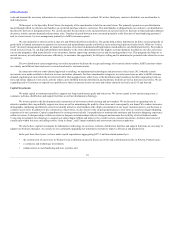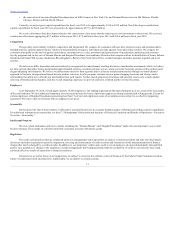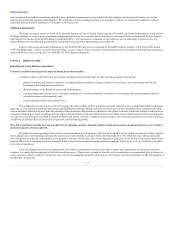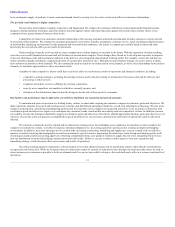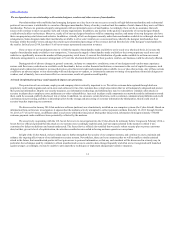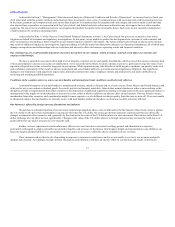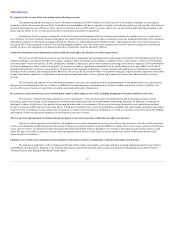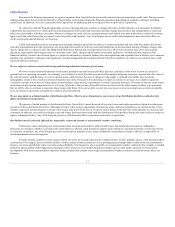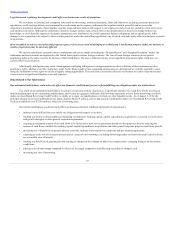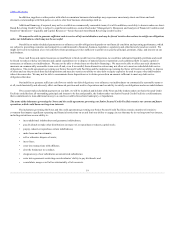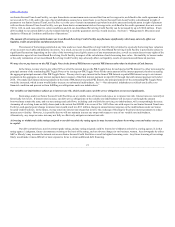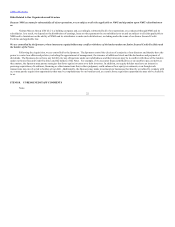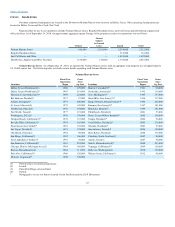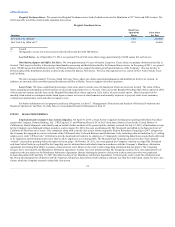Neiman Marcus 2013 Annual Report Download - page 16
Download and view the complete annual report
Please find page 16 of the 2013 Neiman Marcus annual report below. You can navigate through the pages in the report by either clicking on the pages listed below, or by using the keyword search tool below to find specific information within the annual report.
Table of Contents
As described in Item 7, “Management’s Discussion and Analysis of Financial Condition and Results of Operations”, we incurred costs in fiscal year
2014 associated with this security incident, including legal fees, investigative fees, costs of communications with customers and credit monitoring services.
In the future, payment card companies and associations may require us to reimburse them for unauthorized card charges and costs to replace cards and may
also impose fines or penalties in connection with the Cyber-Attack, and federal and state enforcement authorities may also impose fines or other remedies
against us. We expect to incur additional costs to investigate and remediate the matter in the foreseeable future. Such costs are not currently estimable but
could be material to our future operating results.
As described in Note 15 of the Notes to Consolidated Financial Statements in Item 15, the Cyber-Attack has given rise to putative class action
litigation on behalf of customers and regulatory investigations. At this point, we are unable to predict the developments in, outcome of, and economic and
other consequences of pending or future litigation or government inquiries related to this matter. Any future criminal cyber-attack or data security incident
may result in additional regulatory investigations, legal proceedings or liability under laws that protect the privacy of personal information, all of which may
damage our reputation and relationships with our customers and adversely affect our business, operating results and financial condition.
Our continued success is substantially dependent on positive perceptions of our company, which, if eroded, could adversely affect our customer and
employee relationships.
We have a reputation associated with a high level of integrity, customer service and quality merchandise, which is one of the reasons customers shop
with us and employees choose us as a place of employment. To be successful in the future, we must continue to preserve, grow and leverage the value of our
reputation. Reputational value is based in large part on perceptions. While reputations may take decades to build, negative incidents can quickly erode trust
and confidence, particularly if they result in adverse mainstream and social media publicity, governmental investigations or litigation. Any significant
damage to our reputation could negatively impact sales, diminish customer trust, reduce employee morale and productivity and lead to difficulties in
recruiting and retaining qualified employees.
Conditions in the countries where we source our merchandise and international trade conditions could adversely affect us.
A substantial majority of our merchandise is manufactured overseas, mostly in Europe and, to a lesser extent, China, Mexico and South America, and
delivered to us by our vendors as finished goods. As a result, political or financial instability, labor strikes, natural disasters or other events resulting in the
disruption of trade or transportation from other countries or the imposition of additional regulations relating to foreign trade could cause significant delays or
interruptions in the supply of our merchandise or increase our costs, either of which could have an adverse effect on our business. If we are forced to source
merchandise from other countries, such merchandise might be more expensive or of a different or inferior quality from the ones we now sell. If we were unable
to adequately replace the merchandise we currently source with merchandise produced elsewhere, our business could be adversely affected.
Our business is affected by foreign currency fluctuations and inflation.
We purchase a substantial portion of our inventory from foreign suppliers whose costs are affected by the fluctuation of their local currency against
the U.S. dollar or who price their merchandise in currencies other than the U.S. dollar. We source goods from numerous countries and thus are affected by
changes in numerous other currencies and, generally, by fluctuations in the value of the U.S. dollar relative to such currencies. Fluctuations in the Euro-U.S.
dollar exchange rate can affect us most significantly. Changes in the value of the U.S. dollar relative to foreign currencies may increase the retail prices of
goods offered for sale and/or increase our cost of goods sold.
Further, we have experienced certain inflationary effects in our cost base due to increases in selling, general and administrative expenses,
particularly with regard to employee health care and other benefits, and increases in fuel prices, which impact freight and transportation costs. Inflation can
harm our margins and profitability if we are unable to increase prices or cut costs to offset the effects of inflation in our cost base.
If our customers reduce their levels of spending in response to increases in retail prices and/or we are unable to cut costs, our revenues and profit
margins may decrease. Accordingly, foreign currency fluctuations and inflation could have an adverse effect on our business and results of operations.
15



